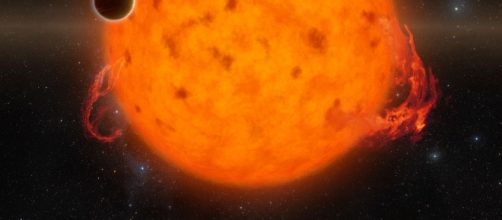Astronomers discovered the youngest fully developed exoplanet- K2-33b. This planet is a little larger than Neptune and completes an orbit around its star in only 5 days. Its age ranges from 5-10 years old. The finding was made using NASA´s Kepler Space Telescope and the W.M. Keck Observatory in Mauna Kea, Hawaii.
K2-33 system and planet K2-33b
This system is formed by the newly found exoplanet and its young host star. The planet orbits the star in about five days and it´s ten times closer to the star than Mercury is to the sun. It´s roughly the size of Neptune and for comparison, while the earth is 4.5 billion years old, K2-33b is only 5-10 million years old, making it the youngest exoplanet ever detected.
From more than 3,000 exoplanets discovered, nearly the majority orbit a middle age star, with billions of years old. The newly discovered young planet and its relative young star, which lie in a system that´s enclosed by a line of debris-protoplanetary disk, may help astronomers understand the way in which planets form.
Transit Method for finding exoplanets
This occurs when a planet´s orbit, as seen from the solar system, is lined up to an observer on earth. As it passes, the planet produces a slight variation in the star´s brightness drops by a small amount which lasts from 1-16 hours. The change in brightness must be periodic and go on for the same amount of time. The mass of the star is calculated using Kepler’s third law of planetary motion.
And the size of the planet is computed from the drop in brightness and the size of the star.
Very close to its host star
The planet´s distance to its star is roughly ten times the distanceof Mercury is to the sun. Astronomers do not really understand how exoplanets end up so close to its host star. While it may take hundreds of millions of years for a planet to migrate from a distant orbit to a closer one, it´s not explicable how K2-33b ended up in such a close orbit.
The first evidence of the planet´s existence was detected by K2 and this data was later confirmed by Keck Observatory in Hawaii. Infrared measurements from NASA´s Spitzer Telescope revealed that the host star is surrounded by a debris of gas and dust, similar to that found on a protoplabnetary disk formation.

